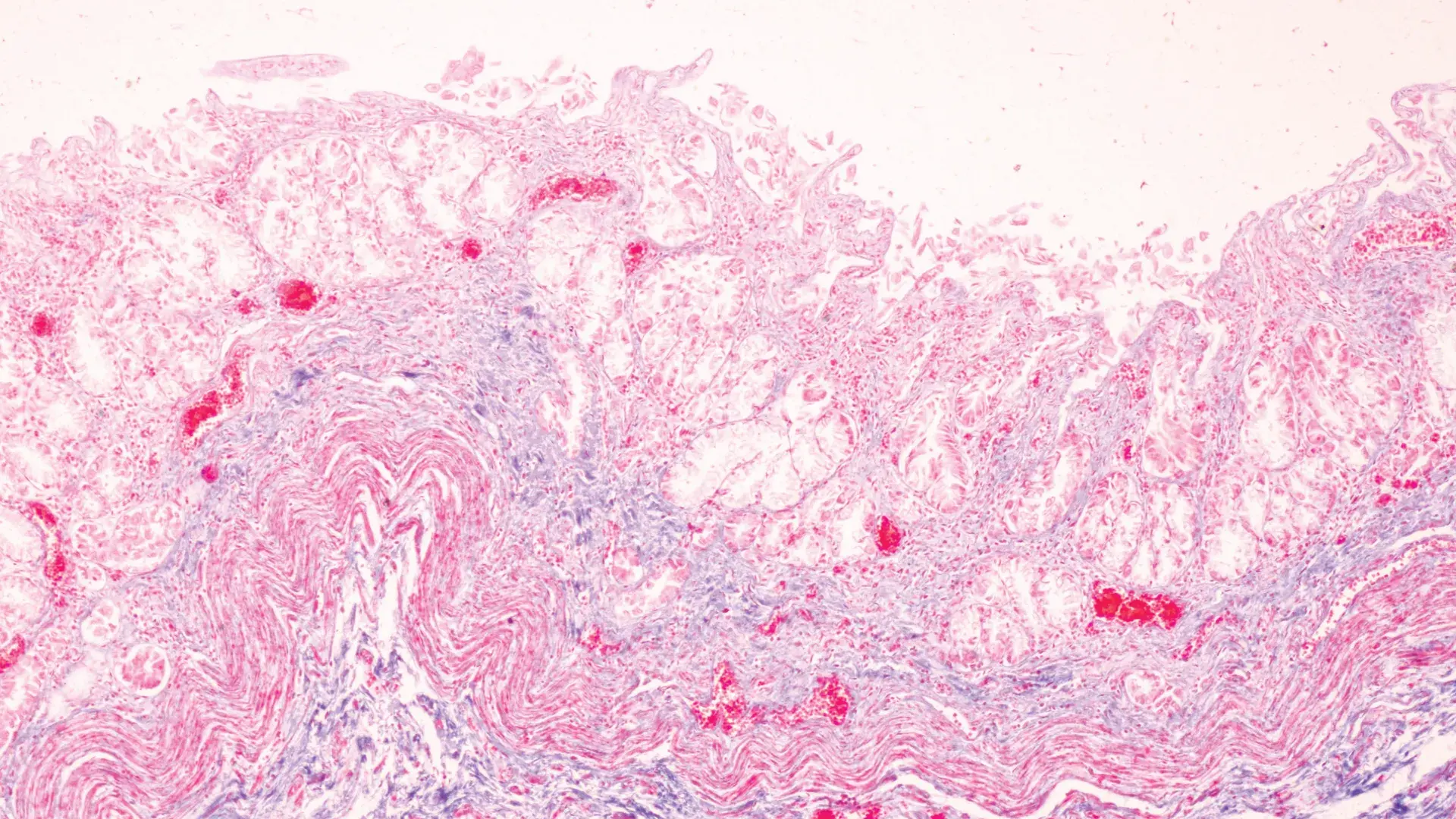4 Questions On NAD/NADH Testing Answered
Unlocking the Secrets of Cellular Energy
6 min read
![]() Dr. Andrea Gruszecki, ND
:
August 3, 2020 at 11:02 AM
Dr. Andrea Gruszecki, ND
:
August 3, 2020 at 11:02 AM

Anyone with seasonal pollen allergies to grasses greets the summer season with sneezing, itching, watery eyes, and other symptoms. Some may develop asthma exacerbations or seasonal gastrointestinal symptoms due to inhaled and swallowed pollens in the gut. In August, the autumn pollens from ragweed and mugwort make their debut and even more individuals will experience seasonal symptoms.
Seasonal hypersensitivity symptoms can result in significant health burdens from lost work or school days and increased healthcare costs. Pollen-related health burdens are likely to increase, not decrease, as our changing climate alters the start, duration, and intensity of pollen seasons. A multi-year study of North American plants and pollen distributions found that pollen seasons may be longer in higher northern latitudes by as much as four weeks. We are seeing real-time evidence of this as cities in Siberia recorded 100-degree temperatures during June 2020 for the first time in recorded history.
Pollen reactions happen when the body’s immune system over-reacts to the presence of harmless substances such as pollens or foods. Pollen-related symptoms may be driven by either IgE or IgG immune responses. Since both IgE and IgG levels may rise with pollen or other aeroallergen exposures, the testing selected should be determined by the patient’s reaction to the antigen. More immediate reactions (minutes to hours after exposures) indicate type I hypersensitivity, while chronic inflammatory symptoms are associated with IgG reactions.
IgE reactions result in type I hypersensitivity, the type of immediate reaction that may result in anaphylaxis. IgG4 is a blocking antibody for IgE, and it helps protect against anaphylactic reactions. The other three IgG subclasses (IgG1, IgG2, IgG3) result in delayed hypersensitivity reactions, which can occur up to 72 hours after an exposure. IgG1,2,3 all cause more chronic inflammation by activating the complement system. It can be difficult to determine the trigger with IgG reactions due to the delay in symptom presentation, without testing.
Pollen exposures can also promote cross-reactions with commonly eaten foods, because there are common proteins found in the pollens that are shared with other types of fruit and vegetable plants. These cross-reactions can exacerbate food sensitivity reactions during pollen season. Common pollen-food cross-reactions are listed in the chart below:
| Season | Aeroallergen | Food Cross-Reactions |
| Spring (March - Mid-May) |
Birch (Betula) Pollen |
Almonds, Apples, Carrots, Celery, Cherries, Coriander, Fennel, Hazelnuts, Kiwi, Parsley, Peaches, Pears, Plums, Raw potato |
| Summer (Mid-May - July) |
Grasses (Poaceae spp.) |
Celery, Cantaloupe, Oranges, Peaches, Tomatoes, Watermelon, Grains (possibly) |
| Fall (August - November) |
Ragweed (Ambrosia spp.) Pollen |
Banana, Cantaloupe Melon, Chamomile , Echinacea, Honeydew Melon, Sunflower Seeds, Tomatoes, Watermelon, Zucchini |
|
Mugwort (Artemisia vulgaris) Pollen |
Apples, Carrots, Celery, Kiwi, Peanuts, Anise Seeds, Caraway Seeds, Coriander, Fennel Seeds, Parsley |
|
| Winter |
Indoor Allergies; Dust Mites |
Shrimp, Clam, Crab, Lobster, Oyster |
On-Demand Webinar: When Food Allergies and the Environment Collide
Clinicians may employ a series of steps to manage both food sensitivity and inhalant allergies and provide patient relief:
In conclusion, summer aeroallergen woes may be exacerbated by food sensitivities, food-pollen cross-reactions or indoor aeroallergens. A variety of management strategies may be employed to provide relief for patients during the summer allergy season.
Anogeianaki A, Castellani ML, Tripodi D, et al. Vitamins and mast cells. Int J Immunopathol Pharmacol. 2010;23(4):991-996.
Bohle B. The impact of pollen-related food allergens on pollen allergy. Allergy. 2007;62(1): 3-10.
Ding S, Jiang H, Fang J. Regulation of Immune Function by Polyphenols. Journal of Immunology Research. 2018;2018:1-8.
Drisko, Jeanne; Bischoff, Bette; Hall, Matthew; McCallum, Richard. Treating irritable bowel syndrome with a food elimination diet followed by food challenge and probiotics. Journal of the American College of Nutrition.2006;25(6):514-22.
Faria A, Gomes-Santos A, Gonçalves J, Moreira T, Medeiros S, et al. Food components and the immune system: from tonic agents to allergens. Frontiers in Immunology. 2013;4: 102.
Geroldinger-Simic M, Zelniker T, Aberer W, Ebner C, Egger C, et al. Birch pollen-related food allergy: Clinical aspects and the role of allergen-specific IgE and IgG4 antibodies. The Journal of Allergy and Clinical Immunology. 2011:127(3): 616-22.e1.
Guarino M, Cicala M, Behar J. Eosinophilic esophagitis: New insights in pathogenesis and therapy. World Journal of Gastrointestinal Pharmacology and Therapeutics. 2016;7(1):66-77.
Gautier C, Charpin D. Environmental triggers and avoidance in the management of asthma. Journal of Asthma and Allergy. 2017;10:47-56.
Hardy H, Harris J, Lyon E, Beal J, Foey A. Probiotics, prebiotics and immunomodulation of gut mucosal defences: homeostasis and immunopathology. Nutrients. 2013;5(6):1869-1912.
Jyonouchi H. Non-IgE mediated food allergy. Inflammation & Allergy Drug Targets. 2008;7(3):173-80.
Li P, Yin Y, Li D, Woo Kim S, Wu G. Amino acids and immune function.
British Journal of Nutrition. 2007;98(02):237.
Liew W. Mohd-Redzwan S. Mycotoxin: Its Impact on Gut Health and Microbiota.
Frontiers in Cellular and Infection Microbiology. 2018;8:60.
Mao TK, Van de Water J, Gershwin ME. Effects of a Spirulina-based dietary supplement on cytokine production from allergic rhinitis patients. J Med Food. 2005;8(1):27-30.
Miehlke S Alpan O Schröder S Straumann A. Induction of Eosinophilic Esophagitis by Sublingual Pollen Immunotherapy. Case Reports in Gastroenterology. 2013;7(3):363-8.
National Geographic (2020) What a 100° day in Siberia really means. https://www.nationalgeographic.com/science/2020/06/what-100-degree-day-siberia-means-climate-change/Accessed 20 July 2020.
Odamaki T, Xiao JZ, Iwabuchi N, Sakamoto M, Takahashi N, Kondo S, Miyaji K, Iwatsuki K, Togashi H, Enomoto T, Benno Y. (2007) Influence of Bifidobacterium longum BB536 intake on faecal microbiota in individuals with Japanese cedar pollinosis during the pollen season. J Med Microbiol. 2007 Oct;56(Pt 10):1301-8.
Okada Y, Oh-oka K Nakamura Y, Ishimaru K, Matsuoka S, et al. Dietary resveratrol prevents the development of food allergy in mice. PLoS One. 2012:7(9):e44338.
Pali-Schöll I, Herzog R, Wallmann J, Szalai K, Brunner R, et al. Antacids and dietary supplements with an influence on the gastric pH increase the risk for food sensitization. Clinical & Experimental Allergy. 201040 (7):1091-1098.
Patel K. (2019) Andrographis panniculata. https://examine.com/supplements/andrographis-paniculata/ Accessed 27 July 2020.
Peng, Guei-Cheng; Hsu, Ching-Hsiang. The efficacy and safety of heat-killed Lactobacillus paracasei for treatment of perennial allergic rhinitis induced by house-dust mite. Pediatric Allergy and Immunology.2005;16(5):433-8.
Petta I, Fraussen J, Somers V, Kleinewietfeld M. Interrelation of Diet, Gut Microbiome, and Autoantibody Production. Frontiers in Immunology 2018;9:439.
Popescu F. Cross-reactivity between aeroallergens and food allergens.
World Journal of Methodology. 2015;5(2):31-50.
Rosenblum Lichtenstein J, Hsu Y, Gavin I, Donaghey T, Molina R, et al. Environmental Mold and Mycotoxin Exposures Elicit Specific Cytokine and Chemokine Responses. PloS One 2015;10(5):e0126926.
Sato Y, Akiyama H, Matsuoka H, Sakata K, Nakamura R, et al. Dietary carotenoids inhibit oral sensitization and the development of food allergy. Journal of Agricultural and Food Chemistry. 2010;58(12):7180-7186.
Schimek E, Zwolfer B, Briza P, Jahnschmid B, Vogel L, et al. Gastrointestinal digestion of Bet v 1-homologous food allergens destroys their mediator-releasing, but not T cell-activating, capacity. Journal of Allergy and Clinical Immunology. 2005;116(6):1327-1333.
Schmidt CW. Pollen Overload: Seasonal Allergies in a Changing Climate. Environ Health Perspect. 2016;124(4):A70-A75.
Wang J. Management of the patient with multiple food allergies. Curr Allergy Asthma Rep. 2010;10(4):271-277.
Weichel M, Vergoossen NJ, Bonomi S, et al. Screening the allergenic repertoires of wheat and maize with sera from double-blind, placebo-controlled food challenge positive patients. Allergy. 2006;61(1):128-135.
Williams, Jesse W.; Tjota, Melissa Y.; Sperling, Anne I. (2012) The contribution of Allergen-Specific IgG to the Development of Th2-mediated Airway Inflammation. Journal of Allergy, vol. 2012 doi: 1155/2012/236075.
Yamaguchi N, Sugita R, Miki A, Takemura N, Kawabata J, et al. Gastrointestinal Candida colonisation promotes sensitisation against food antigens by affecting the mucosal barrier in mice. Gut 2006 vol: 55 (7) pp: 954-960.
Yang, Gui; Liu, Zhi-Qiang; Yang, Ping-Chang (2013) Treatment of Allergic Rhinitis with Probiotics: An Alternative Approach. North American Journal of Medical Sciences vol. 5 (8) p. 465-468.
Yarnell E. Herbs for Eosinophilic, Mast-Cell, and Basophilic Diseases. Alternative and Complementary Therapies. Feb 2016.24-32.http://doi.org/10.1089/act.2015.29038.eya.
Yukihiro Furusawa, Yuuki Obata, Shinji Fukuda, Takaho A. Endo, Gaku Nakato, et al. (2013) Commensal microbe-derived butyrate induces the differentiation of colonic regulatory T cells. Nature, 2013 DOI: 10.1038/nature12721.
Zou T, Yang Y, Xia F, Huang A, Gao X, et. al. Resveratrol Inhibits CD4+ T cell activation by enhancing the expression and activity of Sirt1. PLoS One. 2013 Sep 20;8(9):e75139.

Unlocking the Secrets of Cellular Energy

Short chain fatty acids (SCFAs) are organic acids produced by bacterial fermentation of dietary fibre and resistant starch. Enterocytes and...

Zonulin has emerged as a popular marker to assess the integrity of the intestinal mucosal barrier. Discovered by Dr Alessio Fasano, Zonulin...